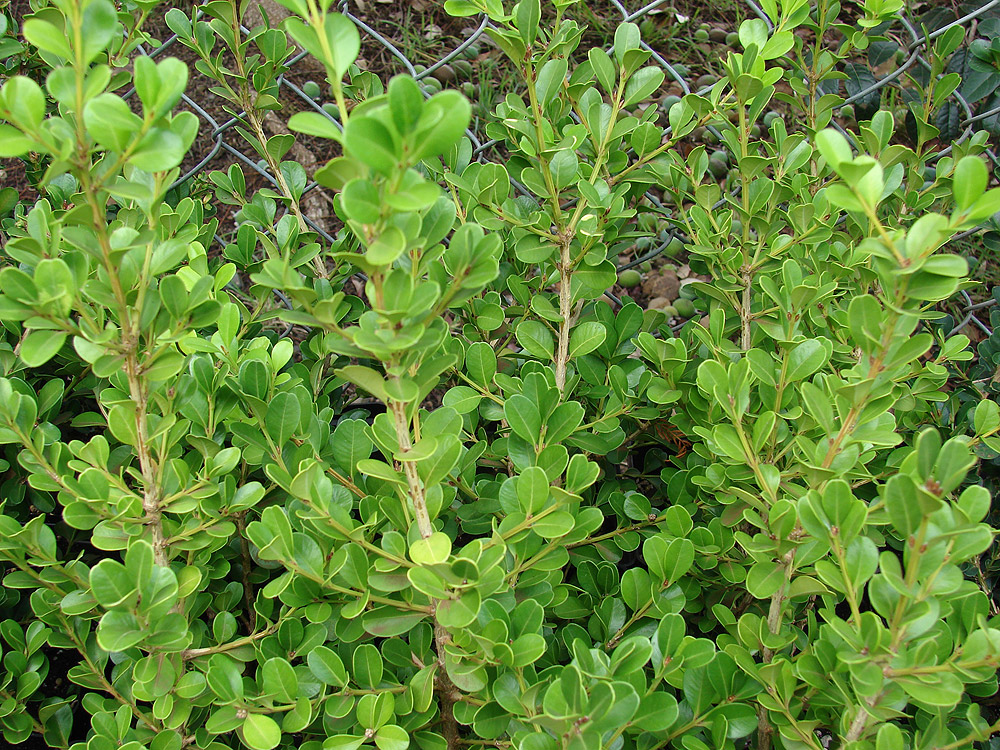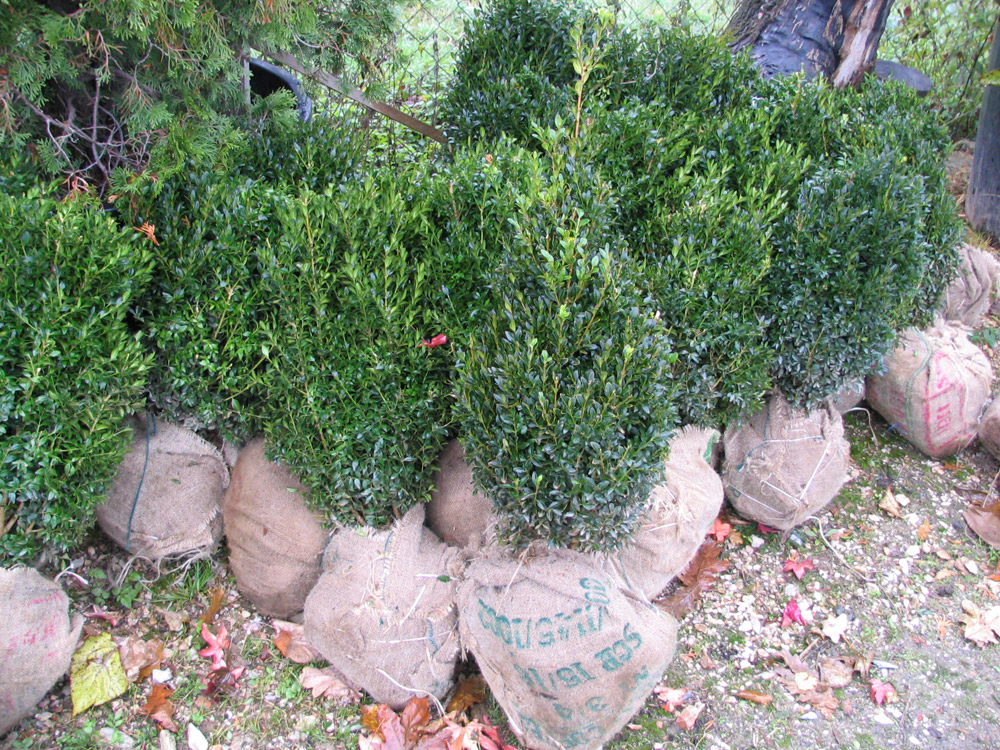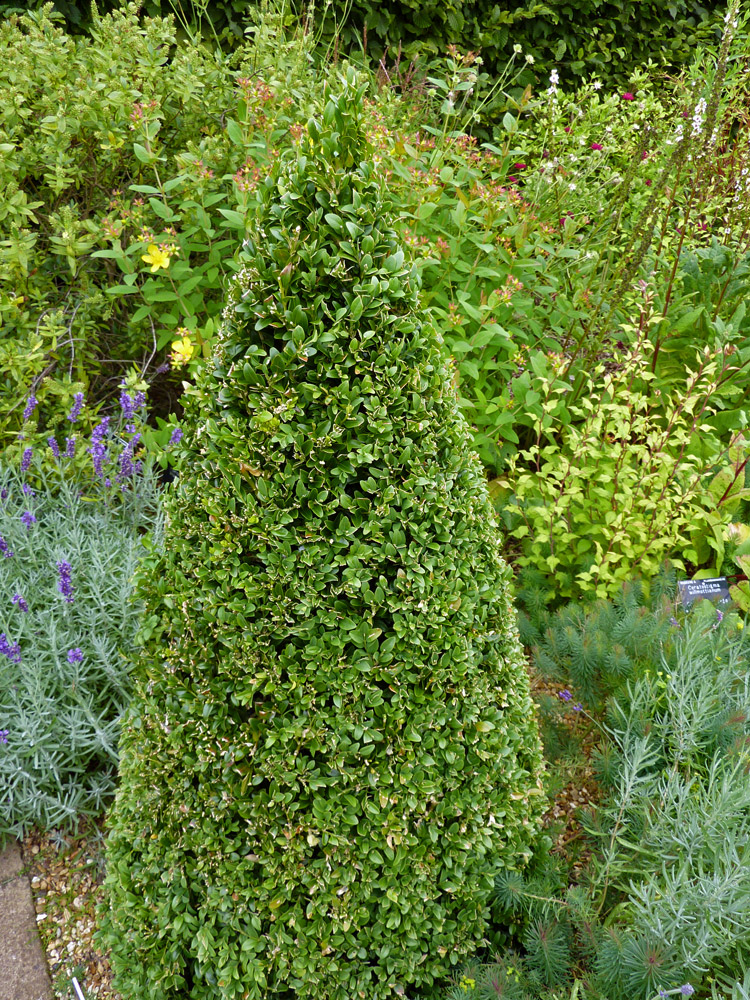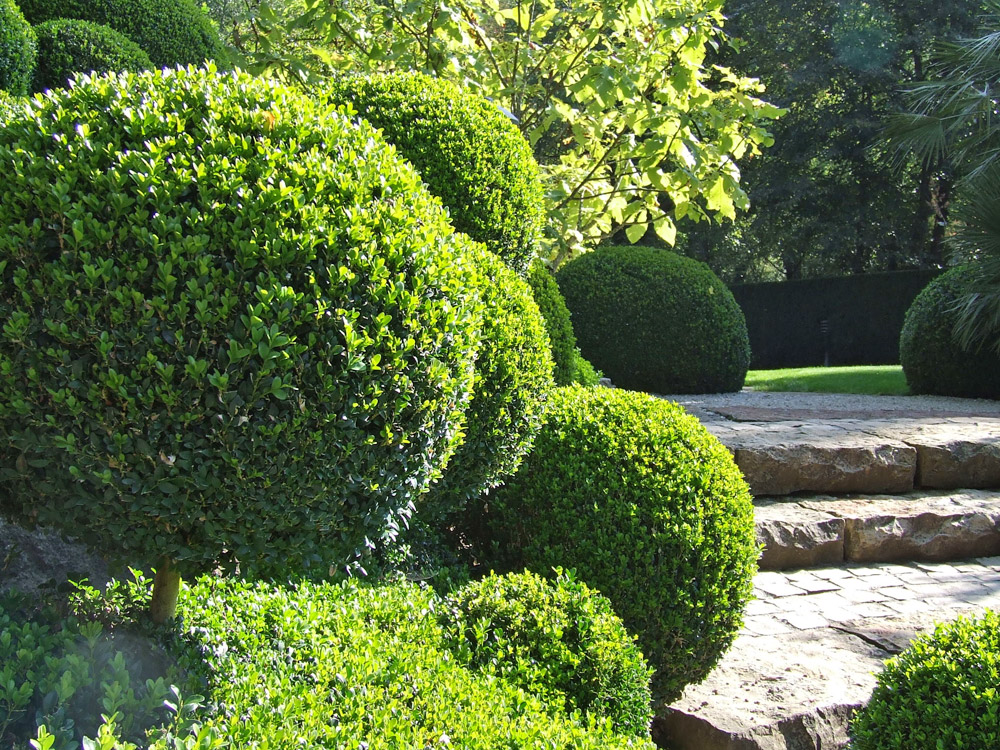Garden Plants, How
and where to grow them
Shrubs & Hedging
Common Box
Buxus sempervivens - Shrub
A classic hedging plant used for the most formal of formal hedges, also if you're feeling adventurous, it can be clipped into balls, pyramids. or whatever shape you like.
Buy box plants, hedging and topiary
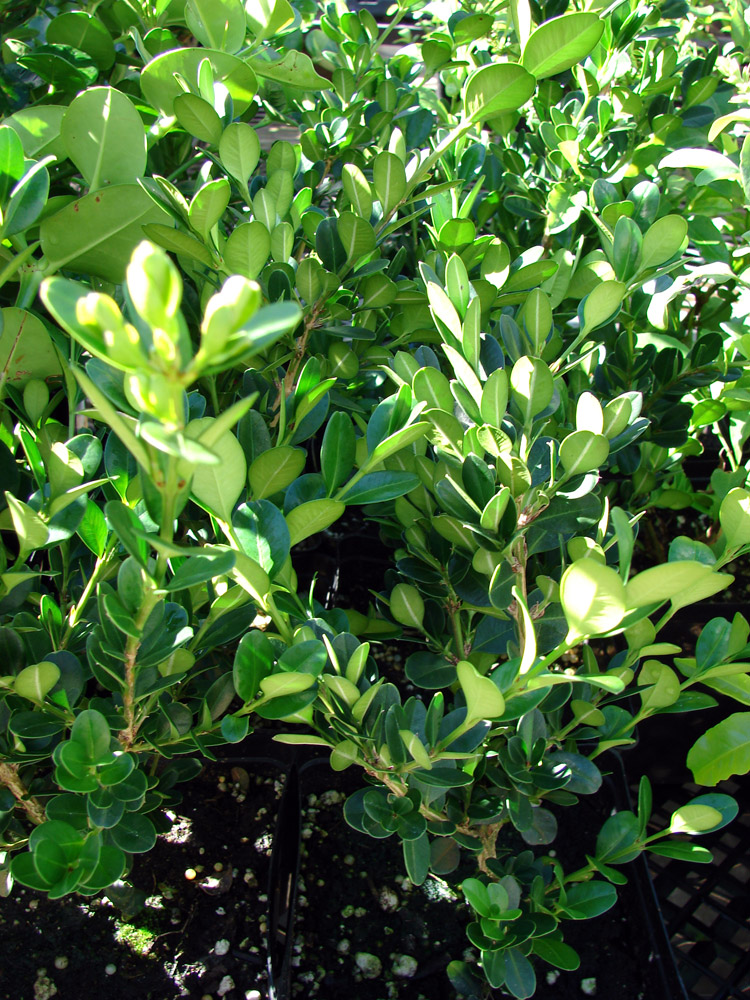 A dense, evergreen screen of small, rounded, lustrous,
dark green leaves. Best with some degree of shade,
they will grow in full sun, but this tends to give them a dull
foliage colour and scorching. The archetypal plant used as a
backdrop to traditional herbaceous borders, knot gardens etc.
Slow growing, so you'll have to have a lot of patience to
get that perfect bright green hedge.
A dense, evergreen screen of small, rounded, lustrous,
dark green leaves. Best with some degree of shade,
they will grow in full sun, but this tends to give them a dull
foliage colour and scorching. The archetypal plant used as a
backdrop to traditional herbaceous borders, knot gardens etc.
Slow growing, so you'll have to have a lot of patience to
get that perfect bright green hedge.
Larger hedges are the species B. Sempervivens, smaller hedges are a variety B. sempervivens suffruticosa
- Height and spread: 5m x 5m (15ft x 15ft), suffruticosa - very slow growing 1m x 1.5m (3ft x 5 ft)
- Position: partial shade
- Soil: fertile, well-drained soil
- Rate of growth: slow-growing
- Other features: contact with the sap may cause skin irritation
- Hardiness: fully hardy
- Garden care: Ensure that the soil or compost is never allowed to dry out. Carefully cut back plants grown as hedges or topiary in mid- or late summer. Carry out rejuvenate pruning in late spring. After pruning apply a top-dressing of a balanced slow-release fertiliser such as blood, fish and bone (organic) or Gromore (inorganic) around the base of the plant.
- Uses: Topiary / Hedging / Containers (topiary)
- Planting distance when used for hedging: 30-60cm, 1-2ft / 30cm, 12" - suffruticosa
- Clipped height Number of times to clip per season and when: 2 - 3 growing season
- Responds to renovation?: Yes
- Pruning: Mid to late summer, otherwise cut back any long shoots that are growing beyond the main form of the bush. Cut whole plant back to 15-30cm, 6-12" of ground to renovate. Sometimes branches take root where they have touched the ground, these should be removed or they will spoil the shape of the plant, and can be planted elsewhere.
Questions about Common box, Buxus sempervivens
Q. Back in the summer I treated myself to a few box plants - balls & pyramids and have them arranged around the patio in pots. Well since the end of the summer and beginning of autumn they have lost their dark green foliage and have taken on a slight autumnal look. Paler green, new growth gone a bit yellow. I didn't expect this. Any idea what the cause could be. Too much sun? Do I need a shadier spot? They rec'd enough water. Is there anything I can give them to bring back the colour and give them a boost
A. Box can do this in the colder months, as long as it's not too widespread or extreme it shouldn't be anything to worry about. I'd move them into a more protected spot for the winter as containerized plants are more prone to the effects of the weather than those grown in the ground.
Buy box plants, hedging and topiary
Photo credits: (numbering left to right top to bottom) 1-Forest Kim Starr - Creative Commons Attribution 3.0 Unported license. / 2-Forest Kim Starr2 - Creative Commons Attribution 3.0 Unported license. / 3-Gmihail at sr wikipedia - Creative Commons Attribution 3.0 license. / 4-Magnus Manske - Creative Commons Attribution 3.0 Unported license. / 5-Pimpinellus CC4 international
Copyright 2000 - present. All Rights Reserved | Privacy Policy Statement

